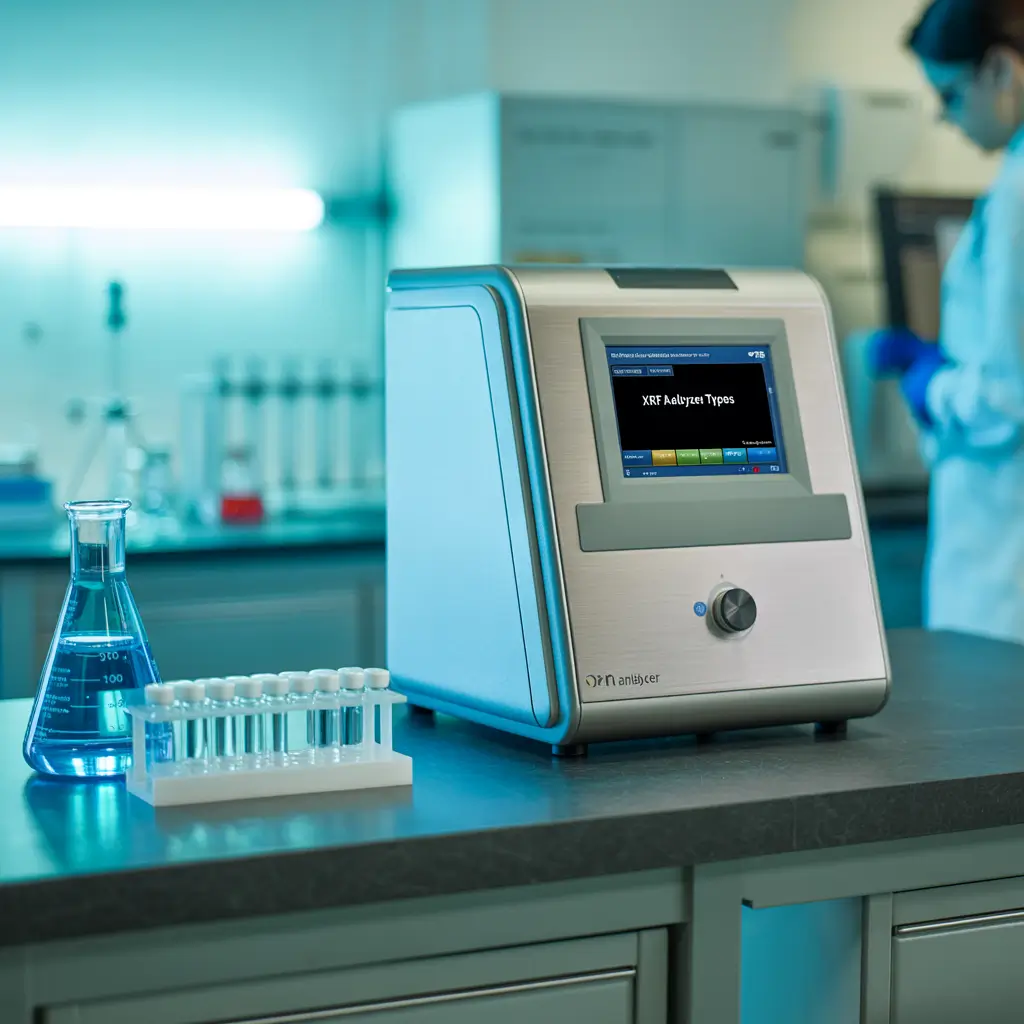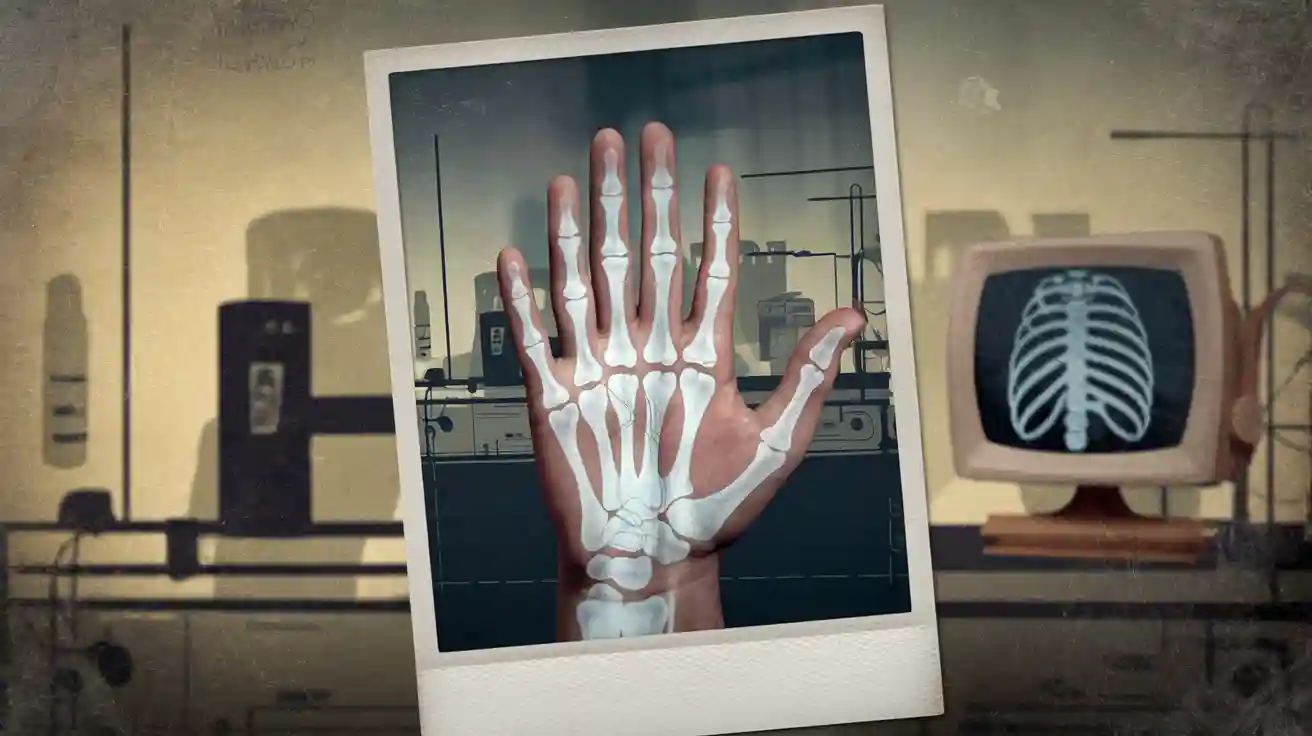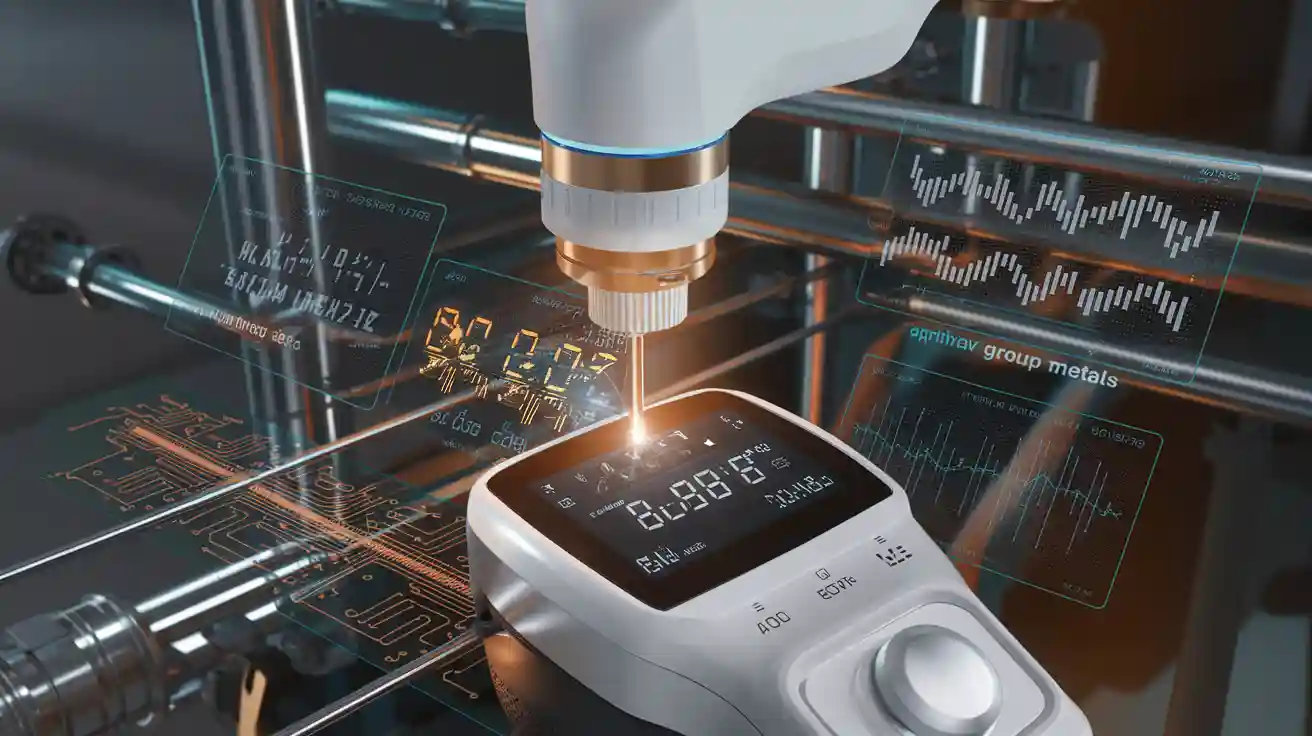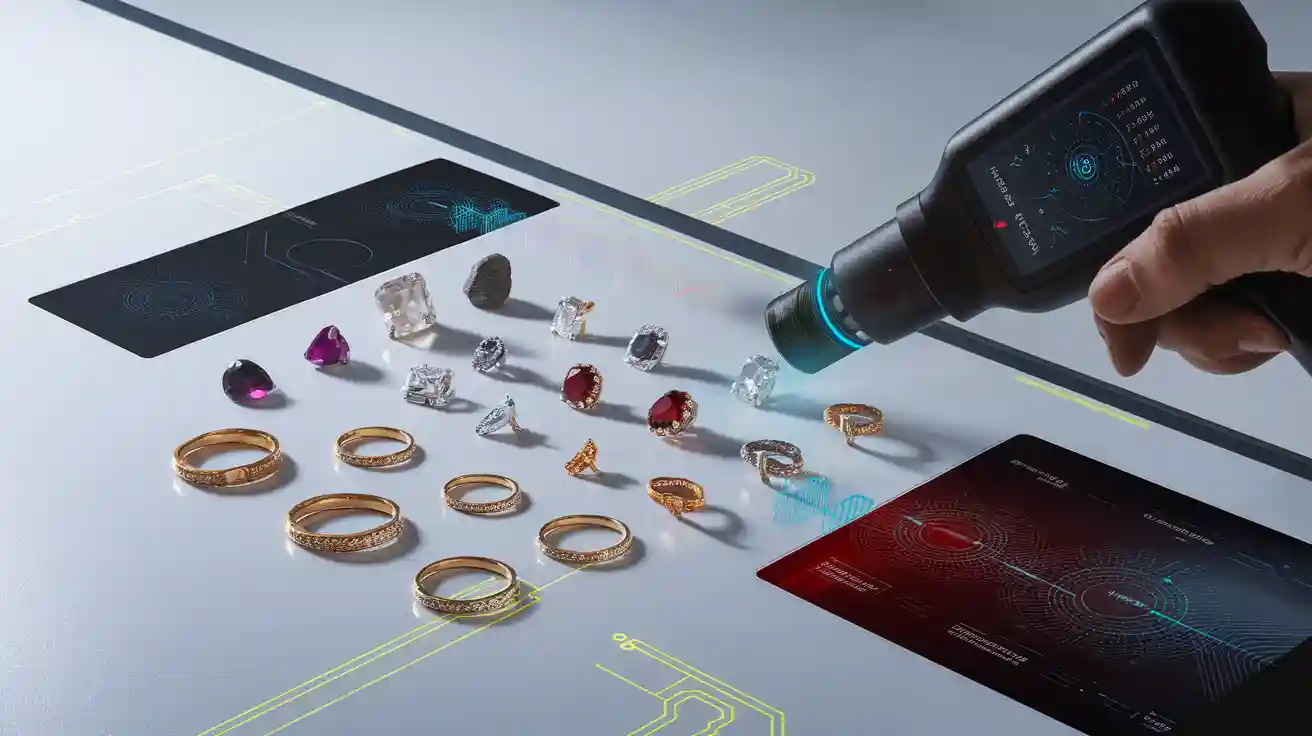
Industries use XRF analyzers to check materials and quality. These tools measure energy from elements in a sample. This helps find metals, minerals, and alloys accurately. XRF is important for checking materials in aerospace, medicine, and oil industries. Experts predict the market will grow 5.7% each year. By 2032, it may be worth USD 4.78 billion. Knowing how XRF analyzers work helps you choose the right one.
Key Takeaways
Pick the right XRF analyzer for your work needs. Handheld ones are best for outdoor jobs, while benchtop ones work well in labs.
Keep your XRF analyzer calibrated often. This gives accurate results and prevents expensive testing errors.
Think about how portable and strong the analyzer is. A sturdy, light design is important for tough jobs like mining or building.
Use smart software features for easier testing. Find tools with auto calibration alerts and cloud storage for simple data saving.
Know the element detection range of your analyzer. A bigger range lets you test many materials in different industries.
Overview of XRF Analyzer Types
Picking the right XRF analyzer depends on your needs. Each type has special features for different jobs. Below is a simple guide to common XRF analyzers and their uses.
Handheld XRF Analyzers
Handheld XRF analyzers are small and easy to carry. They are great for testing materials on-site without needing a lab. Industries like recycling, mining, and environmental testing use them for quick results.
Advantages:
Fast material testing.
Easy to carry for fieldwork.
Built-in GPS for tracking locations.
Benchtop XRF Analyzers
Benchtop XRF analyzers are made for labs. They give very accurate results and detailed reports. Their bigger size allows advanced features for better testing.
Analyzer Type | Uses | Benefits |
|---|---|---|
Benchtop XRF | Lab tests, quality control | Very accurate, detailed reports |
Benchtop models often come pre-calibrated with reference materials. This ensures precise testing of complex samples. If you need to check alloys or materials in a lab, benchtop XRF analyzers are a great option.
Portable XRF Analyzers
Portable XRF analyzers combine handheld convenience with advanced features. They are used in industries like construction, mining, and manufacturing.
Key Features:
Tough design for rough conditions.
Faster testing than handheld models.
Works with accessories like stands and cases.
Specialized XRF Analyzers for Precise Testing
Some industries need very accurate tools to study materials. Specialized XRF analyzers are made for these jobs. They work best in places like research labs, semiconductor factories, and advanced testing centers.
Features That Make Them Unique
Specialized XRF analyzers have special features that handheld or portable models lack:
High-resolution detectors: These detectors find tiny details in materials.
Advanced calibration systems: Preloaded settings keep tests consistent for all samples.
Enhanced software: The software shows clear data and creates detailed reports.
Tip: Use silicon drift detectors (SDDs) for finding very small elements. SDDs make measurements more sensitive and reduce errors.
Where Are They Used?
These analyzers are essential in industries where accuracy is very important:
Semiconductor Manufacturing: They check silicon wafers for purity and tiny flaws.
Pharmaceutical Research: They study drug ingredients to meet strict rules.
Aerospace Engineering: They test metals and composites for strength and safety.
Industry | Use Case | Benefits |
|---|---|---|
Semiconductor | Checking wafer purity | Stops production problems |
Pharmaceuticals | Studying drug ingredients | Meets safety standards |
Aerospace | Testing materials | Improves reliability and safety |
Why Pick Specialized XRF Analyzers?
These tools give the most accurate results. If your work needs detailed material checks, they are better than handheld or portable models. They can find tiny elements, which is crucial for jobs where small mistakes can cause big issues.
Key Technologies in XRF Analyzers
PIN Detectors vs. SDD Detectors
Detectors are important for how well XRF analyzers work. Two common types are PIN diodes and Silicon Drift Detectors (SDDs). PIN diodes are cheaper and simpler but less sensitive. They struggle to detect low-energy elements. SDDs are better because they have higher energy resolution. They are great for precise tasks like environmental checks and material studies.
Detector Type | Key Features |
|---|---|
Solid State Semiconductor | Uses silicon or germanium chips; needs cooling for energy resolution under 165 eV. |
Silicon Drift Detectors (SDD) | High energy resolution (~150 eV) with peltier cooling; detects multiple X-rays in a row. |
PIN Diodes | Smaller size; less sensitive to heavy elements due to thin design. |
The need for accurate element testing has improved SDD technology. These detectors are used in industries like semiconductor production and research labs.
X-ray Tube Anode Materials
The X-ray tube is the main part of an XRF analyzer. Its anode material decides which elements it can detect. Common materials include rhodium, silver, and tungsten. Rhodium works for many uses. Silver is best for light elements, while tungsten is better for heavy ones.
Pick the right anode material for your job. For example, mining often uses tungsten anodes. Rhodium is better for general testing needs.
Energy Dispersive XRF (EDXRF) vs. Wavelength Dispersive XRF (WDXRF)
There are two main XRF analyzer technologies: EDXRF and WDXRF. EDXRF is faster and smaller, perfect for quick field tests. WDXRF is more accurate and detailed, ideal for lab quality checks.
Tip: Use EDXRF for fast results and WDXRF for detailed lab work.
Knowing these technologies helps you pick the best analyzer for your needs.
Calibration and Software Features
Calibration is important to get correct results from your XRF analyzer. If it’s not calibrated, the data might be wrong. This can cause expensive errors. It’s crucial to know how calibration works and why it’s needed.
Why Is Calibration Important?
Calibration matches the analyzer’s readings to known standards. This ensures it measures elements accurately. For instance, in mining, calibrated tools help find ore compositions correctly.
Tip: Calibrating often keeps results consistent and reduces mistakes.
Types of Calibration
Different calibration methods are available for various needs:
Factory Calibration: Pre-set by the maker. Good for general use.
User Calibration: Custom settings for specific materials. Great for unique tasks.
Standard Reference Materials (SRMs): Certified samples to check accuracy.
Software Tools That Help Testing
Modern XRF analyzers have software that makes testing easier. These tools can improve your work process:
Automatic Calibration Alerts: Reminders for when recalibration is due.
Data Charts and Graphs: Show results clearly for easy understanding.
Cloud Storage: Lets you save and share data securely.
Feature | Benefit | Example Use Case |
|---|---|---|
Automatic Alerts | Avoids missed recalibrations | Factory quality checks |
Data Visualization | Makes analysis simple | Environmental studies |
Cloud Storage | Access data remotely | Mining team collaboration |
Note: Pick software that’s easy to use to save training time.
Calibration and software features help your XRF analyzer give accurate results. Learning about these tools can make your testing faster and more reliable.
Industry-Specific Requirements
Mining and Geology
Mining and geology use XRF analyzers to work faster and better. These tools quickly show what minerals and ores are made of. They help when finding new deposits or checking ore quality. XRF analyzers make mining tasks easier and more efficient.
Key Uses in Mining
XRF analyzers are important for three main mining tasks:
Mineral Exploration: Quickly find valuable deposits with fast elemental checks.
Grade Control: Accurate readings help reduce waste by checking ore quality.
Ore Trading: Fast analysis helps make smart trading decisions.
Task | How It Helps |
|---|---|
Mineral Exploration | Speeds up finding valuable deposits with accurate analysis. |
Grade Control | Ensures precise ore grading, reducing waste and saving money. |
Ore Trading | Helps traders make quick and informed decisions. |
Tip: Portable XRF analyzers are great for fieldwork. They are tough and give fast results, perfect for mining sites.
Manufacturing and Quality Control
In factories, XRF analyzers check product quality and meet rules. They test materials to find impurities and confirm their makeup. Whether it’s metals or plastics, these tools ensure products are safe and reliable.
Benefits for Factories
Material Checks: Confirm raw materials are correct before production starts.
Process Improvement: Regular tests catch problems early, saving time and money.
Rule Compliance: Ensure products meet standards to avoid fines or recalls.
Studies show XRF analyzers work well in factories. For example, Barnett et al. found XRF results matched ICP-MS for material testing. Caporale et al. showed XRF recovered 74–110% of heavy metals in soil, proving its accuracy.
Study | Use Case | Elements Tested | Recovery Range | Notes |
|---|---|---|---|---|
Barnett et al. | Fecal Material | Co, Cr, Si, Ti, Yb | Not specified | Strong match with ICP-MS results |
Caporale et al. | Soil Samples | Heavy Metals | 74–110% | Used certified standards |
Shand and Wendler | Soil Standards | Ti, Cr, Mn, Fe, Ni, Cu, As | Not specified | Overestimated some elements |
Roullion and Taylor | Soil Samples | 11 Elements | 90–110% | Better results after calibration |
Note: Benchtop XRF analyzers are best for factory labs. They give detailed reports and high accuracy for quality checks.
Environmental Testing and Compliance
Environmental studies need tools to test soil, water, and air. XRF analyzers find pollutants and check if rules are followed. They are great for spotting heavy metals and harmful elements in the environment.
Uses in Environmental Testing
Soil Testing: Measure heavy metals to check pollution levels.
Water Analysis: Find dangerous elements in water to ensure safety.
Air Monitoring: Portable models test air particles on-site easily.
Research proves XRF analyzers are reliable for environmental work. Roullion and Taylor showed 90–110% recovery rates for 11 soil elements. Calibration improves accuracy even more.
Callout: Always calibrate your XRF analyzer for environmental tests. It keeps results accurate and reduces mistakes.
Precious Metals and Jewelry Analysis
When testing precious metals and jewelry, accuracy is very important. You need tools that quickly and reliably check material composition. XRF analyzers are popular because they test without damaging items. This keeps valuable pieces safe during analysis.
Key Uses in Jewelry and Precious Metals
Material Authentication: Check the purity of gold, silver, and platinum.
Alloy Identification: Find base metals like nickel or copper in mixtures.
Counterfeit Detection: Identify fake items by analyzing their elements.
Tip: Handheld XRF analyzers are great for quick checks. Use them in stores or auctions for fast results.
Benefits for Jewelers and Metal Traders
Quick Testing: Test materials on-site without needing a lab.
No Damage: Items stay intact during non-destructive testing.
Legal Compliance: Ensure products meet purity and labeling rules.
Feature | Benefit | Example Use Case |
|---|---|---|
Non-Destructive Testing | Keeps items safe | Checking antique jewelry |
Portable Design | Easy to carry | Testing gold purity on-site |
High Sensitivity | Finds small elements | Spotting fake metals |
Callout: Always calibrate your XRF analyzer before testing valuable items. This ensures accurate results and builds customer trust.
Research and Academia
In research and schools, precision and flexibility are key. You need tools that can study many materials, like rocks or advanced composites. XRF analyzers are perfect because they give detailed results and are simple to use.
Common Research Uses
Material Science: Study metals, ceramics, and polymers.
Geochemistry: Test rocks and soil for their minerals.
Archaeology: Analyze artifacts without causing damage.
Note: Benchtop XRF analyzers work best in labs. They give high-quality results for advanced studies.
Benefits for Schools and Researchers
Saves Money: Cuts down on costly lab tests.
Easy Software: Makes data analysis simple for students.
Wide Use: Tests everything from rocks to ancient artifacts.
Application | Benefit | Example Use Case |
|---|---|---|
Geochemistry | Finds mineral content | Testing volcanic rocks |
Archaeology | Tests artifacts safely | Studying old pottery |
Material Science | Analyzes material composition | Creating new alloys |
Tip: Pick an XRF analyzer with tools like data charts and cloud storage. These features make sharing and teamwork easier.
Features to Consider
Detector Size and Sensitivity
The detector’s size in an XRF analyzer affects how well it works. Smaller detectors can focus on tiny spots, making them very precise.
Larger detectors collect more X-rays, which improves sensitivity. This is important for finding tiny amounts of elements. If you test things like soil or medicine, a high-resolution silicon drift detector (SDD) is very useful.
Feature | Description |
|---|---|
Detector Size | Tests areas as small as 0.2 mm for accuracy. |
Sensitivity | SDDs find trace elements with better precision. |
Tip: Pick a detector size based on your sample. Use small detectors for detailed items. Use large ones for bulk testing.
Testing Speed and Throughput
Fast testing is important when you have many samples to check. Modern XRF analyzers can give results in just 15 seconds. This lets you test hundreds of samples in one day. Industries like mining and manufacturing benefit from this speed.
Some analyzers for precious metals work twice as fast as others. This helps meet deadlines without losing accuracy. Faster testing also reduces delays, keeping work on track.
A study compared PIXE and XRF for non-invasive testing. Both worked well for elements like Fe and Au, but XRF was faster.
Quick analyzers are great for quality control. They help make fast decisions to keep production moving.
Callout: If you test many samples daily, choose analyzers with faster speeds to save time.
Element Detection Range
The elements an XRF analyzer can detect show how versatile it is. Advanced models with SDDs can find both major and tiny elements. This is key for jobs like checking soil or water for heavy metals.
New analyzers are three times stronger than older ones. They work faster and give better results. This makes them perfect for industries like semiconductors or geology.
Feature | Advantage |
|---|---|
Element Detection Range | Finds both major and trace elements accurately. |
Performance Comparison | Three times stronger for quicker, better results. |
Note: Check the element range before buying an analyzer. A wide range means it can handle many types of tests, from metals to alloys.
Portability and Durability
Picking an XRF analyzer for fieldwork needs portability and toughness. It should handle rough conditions and be easy to carry.
Why Portability Is Important
Portable XRF analyzers let you test materials right on-site. This saves time and skips the need for a lab. Industries like mining, construction, and environmental testing benefit from this. Handheld models weigh under 5 pounds, making them great for long days.
Tip: Choose ergonomic designs to stay comfortable during long use.
Features That Make It Durable
Durable analyzers work well in tough places. Many models have strong casings to resist dust, water, and drops. Some meet IP54 or IP65 standards for weather and debris protection.
Feature | Benefit | Example Use Case |
|---|---|---|
Strong Casing | Resists damage from falls | Mining in rocky areas |
Weather Protection | Handles rain and dust | Outdoor environmental tests |
Long Battery Life | Lasts for long fieldwork | Remote site testing |
Callout: Check the IP rating before buying. Higher ratings mean better protection.
Portable and tough XRF analyzers are perfect for jobs needing mobility and reliability. Picking the right one ensures it works well, even in hard conditions.
User Interface and Connectivity
A simple interface and good connectivity make XRF analyzers easier to use. These features help manage data and improve efficiency.
What Makes a Good Interface
A clear interface makes operating the analyzer simple. Many models have touchscreens with easy menus. Some offer multi-language options for global teams.
Tip: Pick an analyzer with settings you can adjust to your needs.
Connectivity Features to Look For
Connectivity lets you share data quickly and safely. Modern analyzers have Wi-Fi, Bluetooth, and USB options. These tools help upload results to cloud storage or share them with your team.
Connectivity Feature | Benefit | Example Use Case |
|---|---|---|
Wi-Fi | Shares data instantly | Team collaboration remotely |
USB | Transfers files securely | Lab quality checks |
Bluetooth | Connects accessories wirelessly | Hands-free testing |
Callout: Check for cloud integration. It keeps your data safe and easy to access.
A user-friendly interface and strong connectivity make XRF analyzers more efficient. These features save time and reduce mistakes, helping you get accurate results faster.
Accessories and Customization
Built-In Cameras for Better Targeting
Built-in cameras help your XRF analyzer test accurately. They show the exact spot to analyze, giving precise results. This is helpful for testing small or oddly shaped items like jewelry or artifacts.
Cameras make it easier to focus on the right area.
They prevent mistakes from testing the wrong spot.
They speed up the testing process, saving time.
If you work with jewelry or in research, cameras make testing more dependable. They also let you take pictures of the testing area, which is useful for reports or audits.
X-Ray Collimators for Accurate Testing
Collimators narrow the X-ray beam to a small area. This makes testing more accurate, especially for tiny or detailed samples. You can test specific parts of a material without interference from nearby areas.
This tool is great for industries needing high precision, like aerospace or medicine. When paired with advanced settings, collimators give reliable results.
Benefit | Description |
|---|---|
Versatility | |
Precision | Advanced settings improve accuracy for detailed analysis. |
Customization | Adjust settings for specific tasks to ensure better results. |
Collimators make your analyzer more flexible and accurate, helping meet strict industry rules.
Data Sharing Features (Wi-Fi, Bluetooth, USB)
Modern XRF analyzers have tools to share data easily. Wi-Fi, Bluetooth, and USB let you send results to your computer or cloud storage. This removes the need for manual data entry and lowers mistakes.
Wi-Fi lets you share results instantly with your team.
USB allows safe transfers of important files.
Bluetooth connects devices like printers or screens.
These features save time and make the analyzer easier to use. If you need to work remotely or keep data secure, these tools are very helpful.
Tip: Pick an analyzer with cloud storage to access your data anytime.
Protective Cases and Stands
Protective cases and stands help keep your XRF analyzer safe. Cases protect it during travel, while stands provide stability for testing. If you work in tough places like mines or construction sites, these tools are essential. They make sure your analyzer stays in good condition and works well for a long time.
Why Protective Cases Are Important
Cases protect analyzers from dust, water, and accidental drops. Many meet strong durability standards like IP65, which resist moisture and debris. Lightweight designs make them easy to carry. Padded interiors stop scratches and absorb shocks.
Tip: Pick a case with extra compartments for batteries and tools. This keeps everything neat and ready to use.
How Stands Help Testing
Stands keep the analyzer steady, improving accuracy. They are great for benchtop models or small samples. Adjustable stands let you set the perfect angle for testing. This reduces mistakes and gives better results.
Accessory Feature | Benefit | Example Use Case |
|---|---|---|
Protective Case | Prevents damage | Carrying analyzers to field sites |
Adjustable Stand | Adds stability | Testing small items like jewelry |
Callout: For outdoor work, choose accessories built for harsh conditions. This ensures your analyzer works well even in tough environments.
Using protective cases and stands not only keeps your analyzer safe but also makes it easier to use. These tools are a must-have for anyone needing accurate results in challenging settings.
Industry-Specific Software for Better Analysis
Special software makes your XRF analyzer more powerful and useful. It helps collect, analyze, and share data faster. This saves time and makes your work easier.
Why Software Features Matter
Modern software includes automatic calibration, live data visuals, and cloud storage. These tools help you quickly understand results and share them with others. Some programs come with pre-set options for industries like mining or jewelry, ensuring accurate testing.
Tip: If your team works worldwide, choose software with multi-language options.
Benefits for Different Industries
Specialized software meets the needs of various industries. Mining software checks ore quality and minerals. Jewelry programs find precious metals and alloys. Environmental software spots pollutants in soil and water.
Industry | Software Feature | Benefit |
|---|---|---|
Mining | Ore quality analysis | Speeds up exploration |
Jewelry | Precious metal detection | Confirms authenticity |
Environmental Testing | Pollutant detection | Meets safety rules |
Callout: Always update your software to get new features and better performance.
With the right software, your XRF analyzer becomes a specialized tool. It helps you work faster, meet industry needs, and get accurate results.
Picking the right XRF analyzer helps with accurate testing. Choosing one that fits your job reduces mistakes and works better. For example:
XRF tools are 15-20% accurate for basic tests. Using a good library improves this to 5-10%.
Advanced tools like μ-XRF and LIBS have errors under 3% when used correctly.
Talk to manufacturers or try the analyzer before buying. This helps you get the best results for your work.
FAQ
What does an XRF analyzer do?
An XRF analyzer checks what materials are made of. It tests metals, minerals, soil, and alloys. Industries like mining, factories, and environmental studies use it often.
How precise are XRF analyzers?
XRF analyzers are very precise, usually within 5-10% for normal tests. Advanced ones, like μ-XRF, can lower mistakes to under 3%. Regular calibration makes them even more accurate.
Can XRF analyzers find every element?
Most XRF analyzers find elements from magnesium to uranium. Special ones can detect lighter elements like sodium. Always check the specs to see if it fits your needs.
Are XRF analyzers safe?
Yes, XRF analyzers are safe if used properly. They give off small amounts of X-rays, which the device blocks. Follow safety rules, like not pointing the beam at yourself.
Do I need lessons to use an XRF analyzer?
Learning the basics helps you use the tool and understand results. Many analyzers are simple to use with easy controls. Companies often offer guides or help to get started.







WhatsApp
Scan the QR Code to start a WhatsApp chat with us.